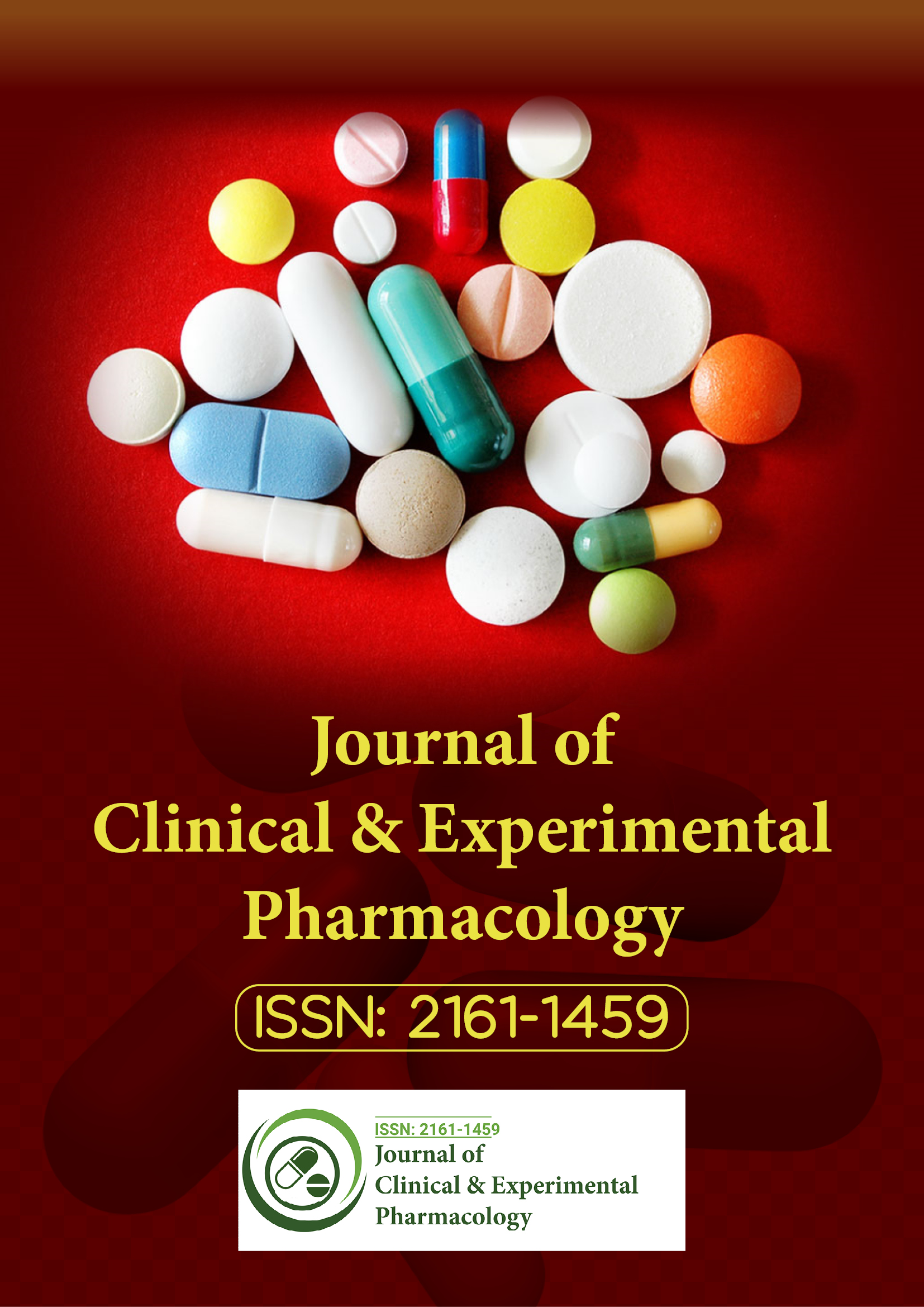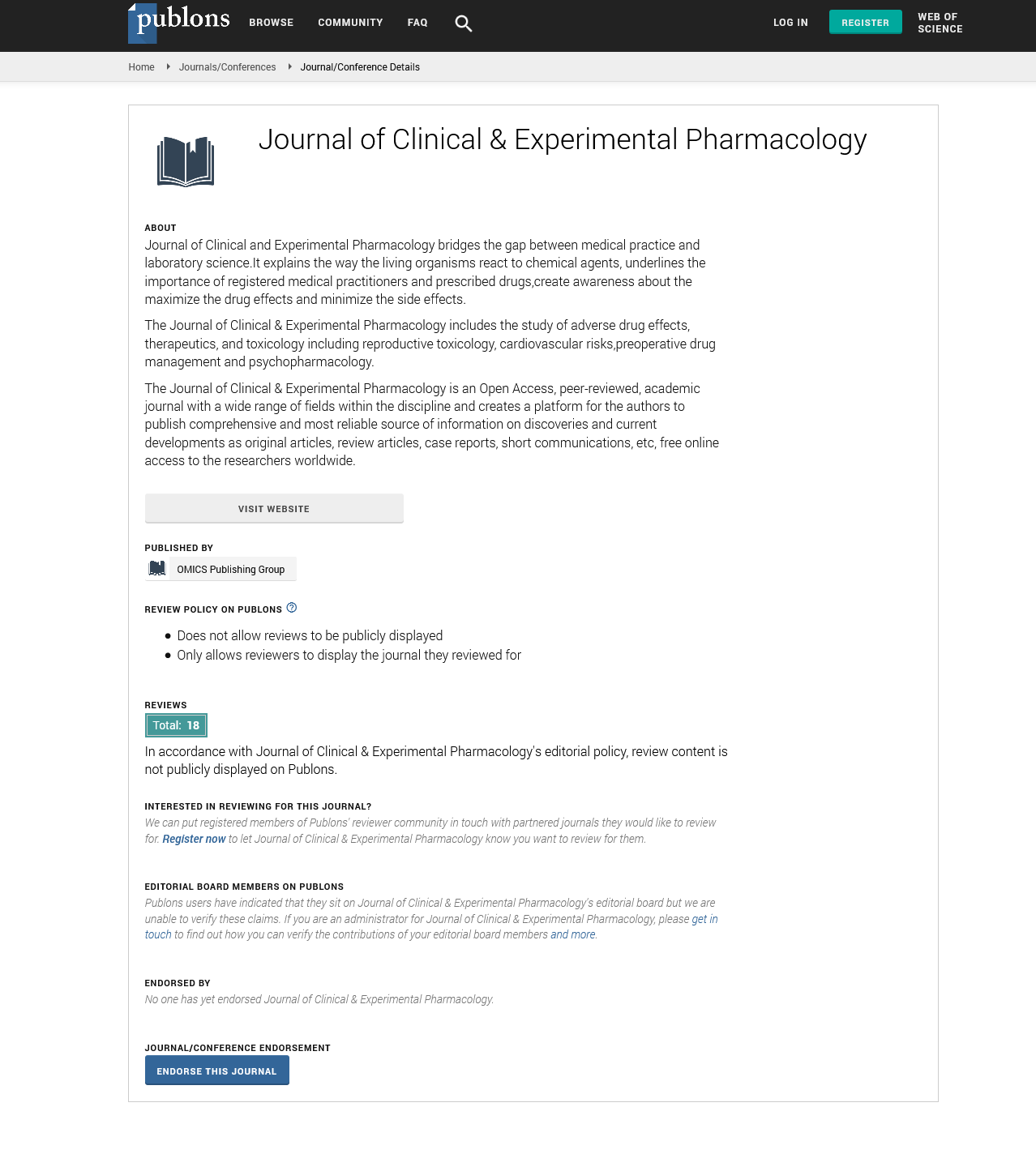Indexed In
- Open J Gate
- Genamics JournalSeek
- China National Knowledge Infrastructure (CNKI)
- Ulrich's Periodicals Directory
- RefSeek
- Hamdard University
- EBSCO A-Z
- OCLC- WorldCat
- Publons
- Google Scholar
Useful Links
Share This Page
Journal Flyer

Open Access Journals
- Agri and Aquaculture
- Biochemistry
- Bioinformatics & Systems Biology
- Business & Management
- Chemistry
- Clinical Sciences
- Engineering
- Food & Nutrition
- General Science
- Genetics & Molecular Biology
- Immunology & Microbiology
- Medical Sciences
- Neuroscience & Psychology
- Nursing & Health Care
- Pharmaceutical Sciences
Plant biopolymers from Boraginaceae family species and their synthetic derivatives: Prospective pharmacological agents
World Congress on Pharmacology
July 20-22, 2015 Brisbane, Australia
K Mulkijanyan, V Barbakadze, M Merlani, L Gogilashvili, L Amiranashvili, Zh Novikova and M Sulakvelidze
Posters-Accepted Abstracts: Clin Exp Pharmacol
Abstract:
Extracts from the plants belonging to Boraginaceae family ? Symphytum asperum, S.caucasicum and Anchusa italica have been used in folk medicine in the treatment of some kinds of disorders, mainly fractures and wounds. These extracts contain allantoin, claimed to be a cell proliferation-stimulating agent responsible for the wound-healing properties of Symphytum and hepatotoxic pyrrolizidine alkaloids, which strongly restrict internal use of Comfrey extracts. Our research group succeeded in obtaining allantoin- and toxic pyrrolizidine alkaloids-free composition containing novel biopolymer from the roots of aforesaid plants ? poly[oxy-1-carboxy-2-(3,4-dihydroxyphenyl)ethylene] (BP) and synthesizing its monomer (M-BP). BP and M-BP were studied to appraise their pharmacological properties. Different in vitro and in vivo experiments revealed that the investigated compounds exhibit: 1) antioxidant activity and anti-complementary activity due to the inhibition of xanthine oxidase and complement convertase, respectively; 2) burn and wound healing properties due to the shortening of the second phase of wound healing-the inflammatory response; 3) inhibition of androgen-dependent and independent prostate cancer (PCA) cells growth in vitro. Consistent with in vitro results, in vivo study showed that BP strongly inhibited 22Rvl tumors growth without any toxicity; 4) abrogation of melanoma cells adhesion to tumor-conditioned medium and VEGF-activated endothelial cells; 5) significant stimulation of leucopoiesis in mice drug-induced leukopenia. Strong efficacy of BP and M-BP in different experimental models suggests its high therapeutic potential.

